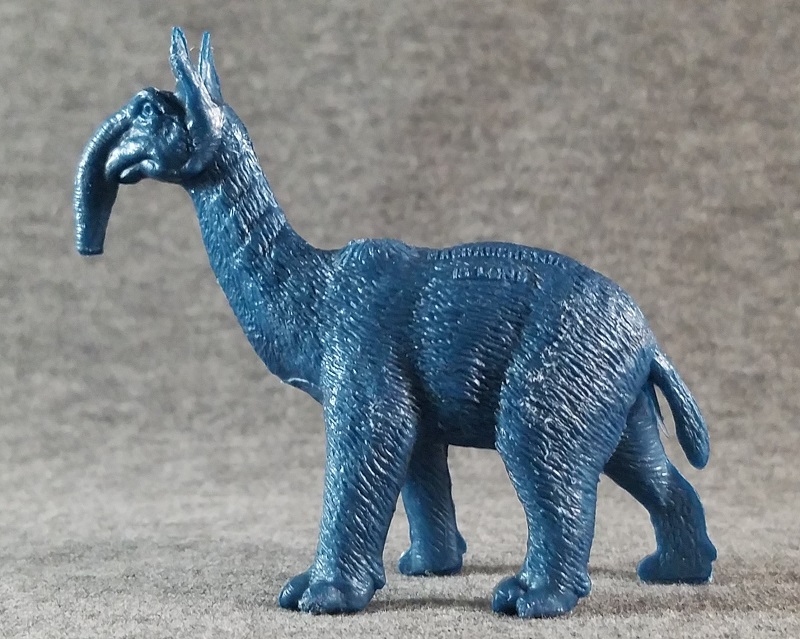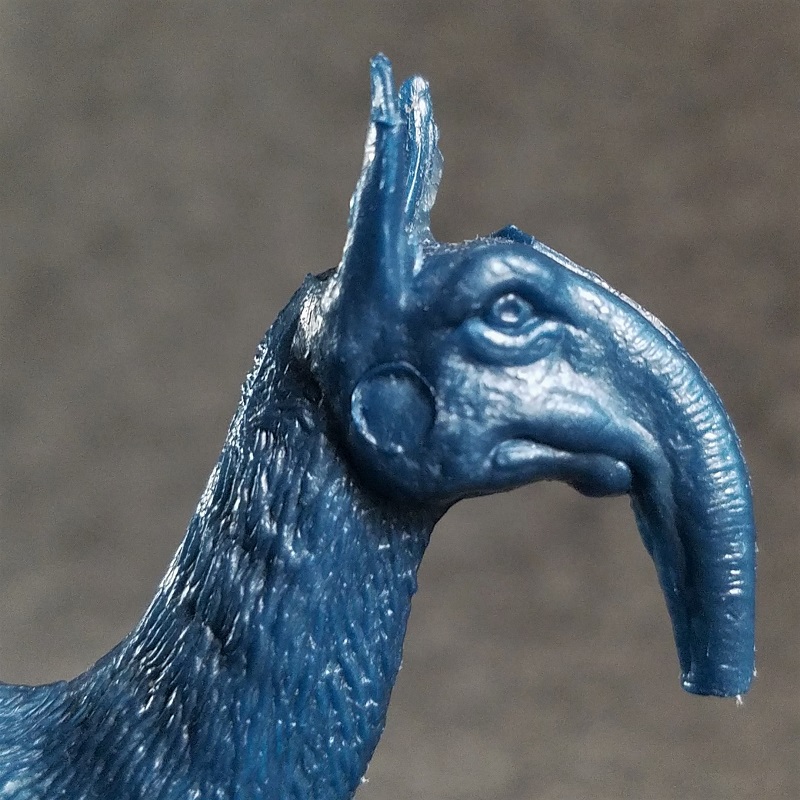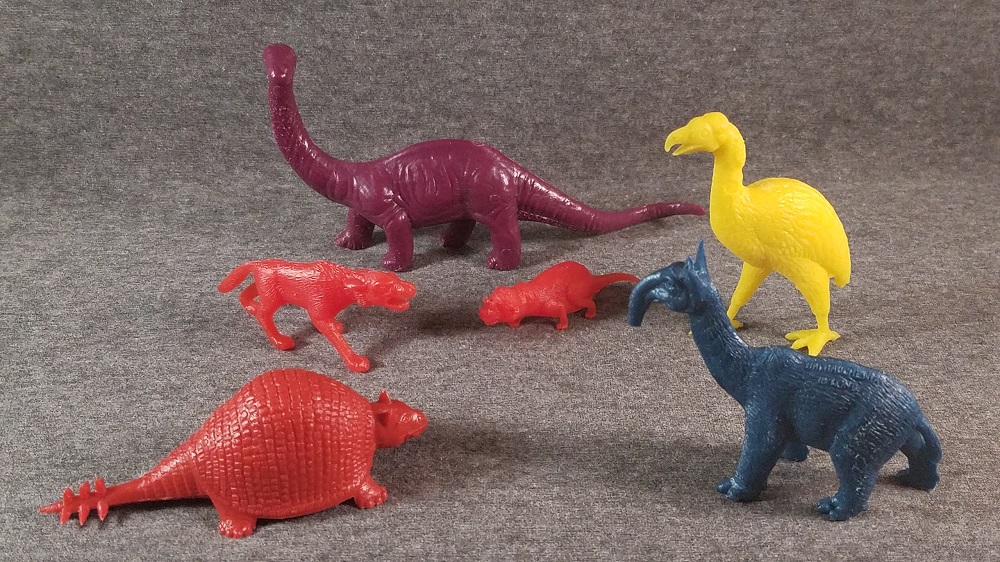
Macrauchenia looked like it could have inspired some of the creatures in a Dr. Seuss book, if its history of paleoart is anything to go by. First described in 1838, the “long-necked llama” hasn’t achieved the same level of fame as some of its mammalian contemporaries from the Miocene and Pleistocene; however, its lanky legs, long neck, and peculiar trunk make for a very distinct image, and have earned the genus at least a few toys over the decades. Perhaps the first toy rendition was one created by Multiple Products Corporations in 1962, as one figurine among their last produced sets of prehistoric life. Although most of MPC’s prehistoric creatures were weaker imitations of larger figures from the older Marx brand, a few truly original molds were produced during the company’s second series of sets. Most of these new figures were of mammal genera, including the “long llama” Macrauchenia.

The MPC Macrauchenia is on of three mammals and one dinosaur which make up the “series 2, mold group 6” set of prehistoric play pieces, the final group produced from the company. Macrauchenia stands a little over 6cm (about 2.5 in) tall at the ears and about 7cm (2.75 in) long – fairly average in size for an MPC extinct critter. The animal appears paused mid-stride, neck raised and ears perked up as if possibly on alert. Some faint patterning is present from the shaping of the plastic in production, and mold circles are visible on the right cheek, shoulder and hip.

Macrauchenia has gone through a few revisions in life restorations over time, as is typical of prehistoric specimens. MPC’s particular rendition appears closest to artwork produced by William E. Scheele in 1955, for a book titled The First Mammals, which Scheele both illustrated and wrote. This rendition is a bit more heavyset, with stockier legs and neck and a possibly thicker fur coat. More recent reconstructions typically favor a gracile appearance, fitting for a swift, fast-running herbivore. Macrauchenia lacked the hooves seen in many modern grazers, and MPC correctly depicts the animal with toes instead of hooves; however all feet appear to be missing the inner toe. Perhaps the most distinguishing feature of the animal was its trunk, which MPC made sure to emphasize on this figurine without exaggerating too much. Ironically, studies in 2018 suggest Macrauchenia might not have had a trunk at all, but a bulbous nose akin to a moose. Of course, this study comes over 50 years after MPC’s little toy went out for sale. During 1962, this figurine was the closest thing to a cutting-edge reconstruction rendered in plastic.

MPC toys were not painted, but molded in a variety of colorful solid plastics. My Macrauchenia is a dark metallic blue, faintly glossy in a manner which highlights the fine details of the sculpted fur pelt and facial features. Although MPC often produced their figures in multiple color versions, most examples of the Macrauchenia I’ve seen online are a similar blue or grayish-blue hue. Red or brown variants have been reported in the past, but are considered to be rare.

MPC would run their figures for many years before being bought by other corporations, and even then their toys continued seeing release long after the MPC label was retired. MPC’s prehistoric life would have been a staple of playtime for many generations of young paleo fans; and although most figures from the line might look cheap or quaint now, at least a few releases like Macrauchenia were a sign of greater possibilities. Macrauchenia is a fine little collectible that prehistoric mammal fans and vintage collectors are sure to appreciate. Although the Macrauchenia is a little less common and more in demand than most figures from the line, keep your eyes open on sites like eBay, eCrater, and Etsy, and you’re bound to find one soon enough!

Support the Dinosaur Toy Blog by making dino-purchases through these links to Ebay and Amazon. Disclaimer: links to Ebay.com and Amazon.com on the Dinosaur Toy Blog are often affiliate links, when you make purchases through these links we may make a commission

Really great toys of yesteryear. Thanks for the memory.
I have that one but sadly the trunk is broken. But that makes it more ‘accurate’
Ironically enough!